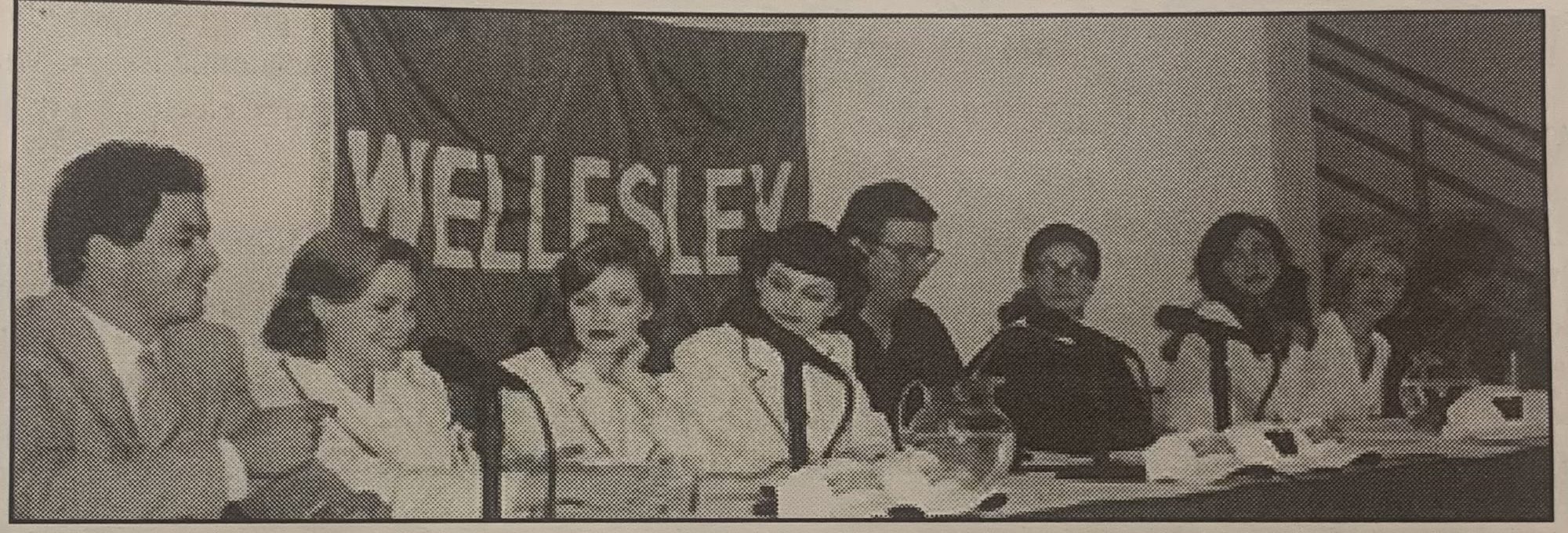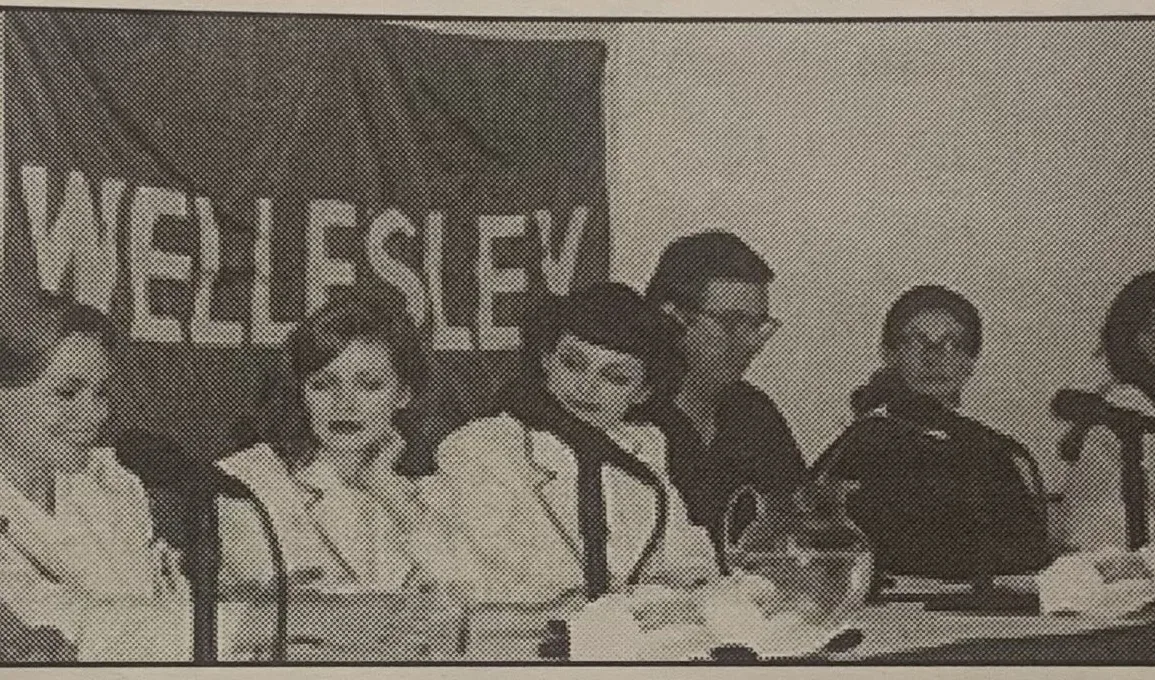
My philosophy professor insisted on starting each class with meditation. But as I attempted to “focus on my breath,” I saw flashes of myself pinned against my dorm room wall and felt the weight of my clash with college administration over the on-campus filming of the 2003 movie “Mona Lisa Smile.” Instead of finding inner peace, I relived dark memories during those mandatory meditation sessions.
As a senior at Wellesley, I lacked the voice to articulate my intersecting traumas, a reality that others on campuses across the country continue to face, given the pangs of social justice work and the prevalence of domestic violence.
As I reflect on the 20th anniversary of the film that divided Wellesley, I remember the dark dorm room and the cold administrative offices where I suffered, and also the lessons that year taught me about the toll of anti-racism work. At Wellesley, I learned how to be a strong woman who would “make a difference in the world.” But I also learned that fighting injustice and breaking glass ceilings leaves open cuts and vulnerable wounds.
An abusive boyfriend was one of two battles that defined my senior year. I also co-led ETHOS when campus tensions exploded over a racist casting call after “Mona Lisa Smile” filmmakers announced they wanted student extras who were “not too tall and not too tan.” Many Black students felt hurt and excluded, especially since “too tan” or Black women actually attended Wellesley during the 1950s time period reflected in the film.
The film’s attempt to erase us from the history of our own college, and administrators’ initial indifference, was enraging. It also wrecked my mental health and grades. I sometimes say that Mona Lisa Smile stole my Latin Honors, robbing me of study time as I attended meeting after meeting with administrators to advocate for inclusion. The concessions – to allow some Black students to serve as extras and others to work as production assistants – were hard-fought gains that took the advocacy of many.
Yet, the tense negotiations of these concessions accelerated a breakdown between students and administration, ultimately leading to a semester of protest, the exposure of longstanding racial grievances on campus, and appearances by two controversial speakers – Amiri Baraka and Phyllis Schlafly – who deepened racial tensions.
My voice was strong in President Diana Chapman Walsh’s office in Green Hall when I spoke out to protect my classmates from Hollywood’s anti-blackness and systemic injustices, but it was weak in that dark dorm room when I needed to protect myself.
With my soul crushed from the weight of anti-racism work each day, there was little inner strength left to protect myself at night. The campus battles left me drained, making me easy prey for a tormented lover waiting to strike.
Oppressions are often interlocking. Colorism, anti-Blackness, race-based traumatic stress and racial violence can erode self-confidence, making one more susceptible to domestic violence. Because liberation is a form of prevention, recognizing and challenging intersectional traumas fosters healing.
The shame that I felt from being “too Black” for Hollywood and too outspoken for Wellesley was part of the reason that I felt unworthy of healthy love. And, knowing the harsher treatment that Black men faced with campus police and the criminal justice system at large was a barrier to seeking help.
The only time my public life and private life collided was in that philosophy class as we began our daily meditations. Each time I closed my eyes, I felt exposed. Years later, I often joked that I failed my college meditation course, never explaining why. I had no plans of revisiting the practice of meditation until I stumbled across the “Beyoncé Meditation” on Peloton. The guide invited me to join her in a “space of unconditional love.” Watching the ceiling, I listened closer.
“Remind yourself how far you have traveled to this moment. The challenges, the obstacles: honor them,” she said.
With that invitation, I drifted back to my days at Wellesley, but this time, instead of seeing the dorm room dungeon or Green Hall showdowns, I saw my 20-year-old self-fidgeting in that philosophy classroom, eyes wide open, fighting to avoid darkness. Shifting back to the present, my eyes burst open, and two decades of unprocessed trauma puddled on my neck and chest.
In that moment, I realized that what I had long seen as my college failure was actually my determination to survive. Keeping my eyes open during those college meditations years ago was my soul’s way of shielding itself from the painful flashbacks of the intersecting battles that plagued my senior year.
I saw my college self full of pain, longing for protection. I reached across time and soothed 20-year-old me. I told her that earning a C in philosophy didn’t ruin her chance at grad school. I told her that she was a survivor. Although I initially resented those meditation sessions in Professor Adrian Piper’s philosophy class, meditation has now become a space where I can privately process both the remains of the day and the remnants of old pain. A place where I can give that 20-year-old who faced the double burden of domestic violence and anti-Blackness the grace I deserve. A place where I can whisper: you’re worthy; you’re safe; beloved, at ease.
Cathryn Stout, Ph.D. is a class of 2003 alum and a scholar of American cultural history.


